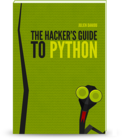I’ll talk about things that may frustrate you with Sphinxdoc and ReadTheDocs. ReadTheDocs has a beautiful theme and you certainly want to use it with Sphinxdoc. However the size of the main text may be too small for you. Or you noticed that when you try to generate a version locally you’ll see it works like a charm but when it’s compiled on Readthedocs, it will fail.
Here is a solution on how to make it work both locally and on Readthedocs:
I recently been faced on a classical problem on InnoDB which is the fragmentation, but on Galera. InnoDB engine doesn’t defragment on the fly and requires optimize maintenance sometimes to free disk space. But on Galera, which is a fault tolerance and high availability solution, it’s a problem having tables locked by an optimize procedure. Until Galera doesn’t support TokuDB and only fully support InnoDB, we had (with a colleague (Kevin aka Vinek)) to find a solution.

I already heard of Sphinxdoc a year ago and see some of my colleges are using it for professional or personal usages. With my friend Sebastien Tardif (Teka101), we decided to rebuild a complete documentation for MySecureShell in a more fashion way as the old doculentation starts looking ugly. Even if it’s more an oriented Python solution, it can be used for any other kind of project and we decided to use SphinxDoc to make a newer documentation.

You may know that I really like LXC and the major problem when you want to use that solution in production is: how do you monitor memory and CPU?
Regarding the CPU side, I do not have an easy answer for the moment :-(. However regarding the memory, I’ve made a Nagios/Naemon check which will check the memory (RAM) and SWAP of a container. Here is how to use it:

One of my colleague (Julien Danjou) wrote a book on advanced usage of Python. The book was out today and I strongly recommend buying it. Here is the summary of it:
Python is a wonderful programming language that is being used more and more in many different industries. It is fast, flexible, and it comes with batteries included.
Most of the books you read about Python will teach you the language basics – but once you’ve learnt them, you’re on your own in designing your application and discovering best practice.

I recently discovered DevDocs website. It’s an easy way to get a lot of informations on many different developments languages.
I hope you’ll enjoy that site as well : http://devdocs.io
I’ve updated DeleteHistory extension to :
Add Brazilian Portuguese language Fix minor bug on reporting array You can easily install the new version with Git as described in the official Mediawiki webpage.
Hope you’ll enjoy this update
